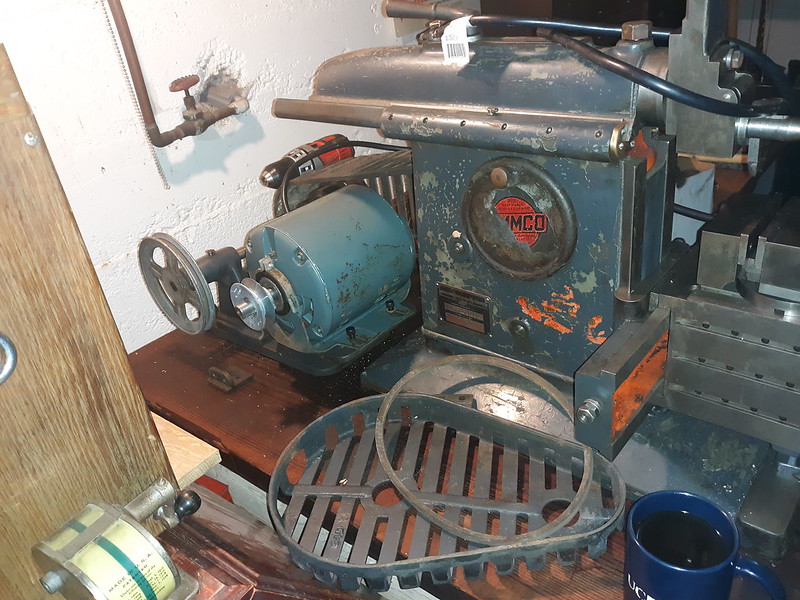So, slight update: I finally got some time to throw the vise into a tub of kerosene, which - for the record - works really well at stripping grime. That was a very good suggestion...and pairing it with bronze wool made the job pretty quick and painless.
Pictured: And also somewhat...gritty.
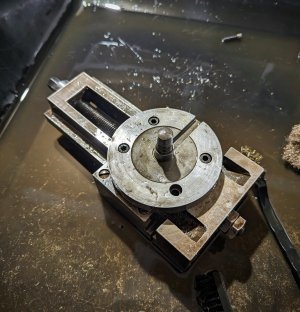
I love cleaning stuff with bronze wool; it's basically scratch-proof, which doesn't seem to be the case with certain Scotch-Brites...and the more I think about it, the less I want to restore any of this machine. This is the basic problem of conservation: how far do we go with the cleanup? You don't want to remove the story and the history, but you do want the piece to be stable and workable for years to come; in this case, I think it's just going to be de-griming and removing the worst of the dirt.
Pictured: The worst of the dirt.
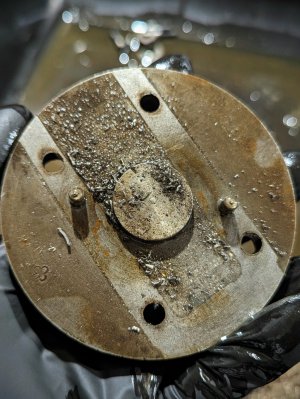
I questioned whether I should pull the vise apart at first; I'm always afraid that I won't be able to get whatever-I'm-taking-apart back together again...so most of the photos I took were basically just for reassembly purposes. Some of them looked decent enough to post, though, and I think that seeing the cleanup effort just adds to the story...and that story actually points to a machine that's been used a
lot, but kept up. Example: I had originally thought to reverse the jaws on the vise to get a cleaner surface on the exterior...but it looks like someone's already done that.
Pictured: Or, alternatively, these were recycled from the scrap bin...
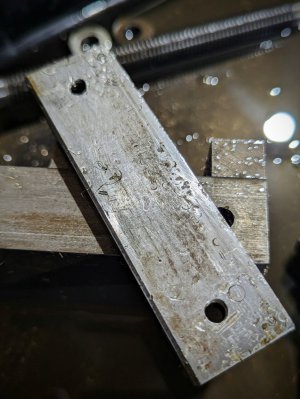
This is interesting, because I don't know what all of these tooling marks indicate; some of it looks like drill scoring, but other areas look like punch/drift/chisel scores...and some of the circular marks look like the fine lines you see from a leather/fabric-cutting punch. I'm vaguely wondering if these jaw plates aren't replacements, already; my hunch is that the company that was using the shaper had an issue with the original jaws and made a new set from what they had lying around...or this
is the original set, and they somehow managed to mar them in this way. Either way, the jaws are well-made, and they fit correctly; for now at least, I'll keep them.
Pictured: Also, on the subject of things being well-made...
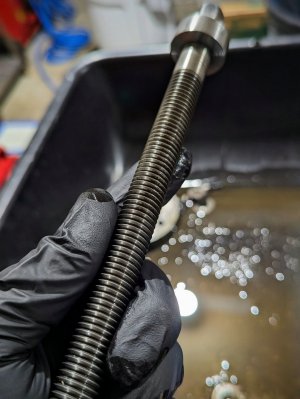
The vise screw is almost perfect. Hardly any wear, and no damage to speak of, which is a big win...as is the generally-good shape of the parts after a basic cleaning.
Pictured: Some assembly required.
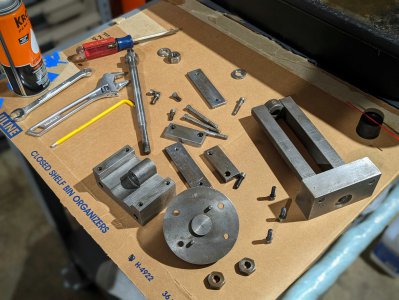
Also, if we look very closely at the base...plate?... there's a little secret lurking there.
Pictured: Four more of these and I'll have a flush.
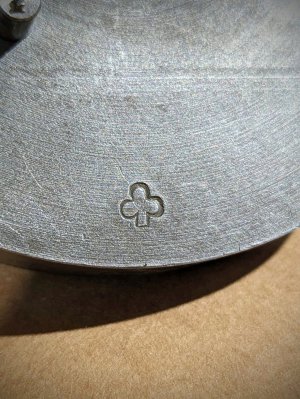
This is why I like taking things apart and
not restoring them; you both find and keep all of the little hidden parts that you'd never know about, otherwise. I have no idea what this "clubs" stamp is doing here, but it's not on any other part that I could find. I don't know if that's the mark of a company or an individual machinist, or if it has some other information to impart, or if it's just a bit of whimsical decoration...but all symbols have some sort of meaning, somewhere, so this had meaning to the person that imparted it. Any ideas of what significance it might hold?
Meanwhile, in the tub...
Pictured: I regret my decisions.
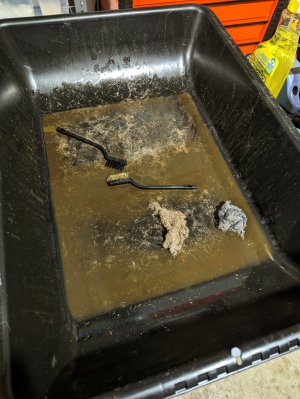
I don't know what it is about bronze wool that makes it so damned messy, but you'd think that they could make it from an alloy that's both non-marring and which avoids self-destruction at the lightest pressure. Seriously, that stuff gets
everywhere; I had to towel and blow off every. single. bit. of the various parts in order to get all the bronze fibers back out of them. That was decidedly not fun...but the result was worth it.
Pictured: The new hotness.
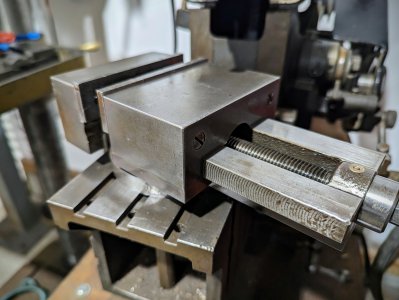
Yes, I know it's not a perfect, flawless clean-up...but I didn't
want it to be. I keep going back to the storyline of the machine, and if I got rid of the rough casting remainders on the vise...frame?...and the deep cutter marks and the glazing of stable rust and the varnished cosmoline, I would be destroying part of the machine's identity. Perhaps I'm going a bit overboard in my anthropomorphism, but I do see equipment like this as having a story to tell...especially so in the case of the wartime pieces. The roughness of some of the millwork and casting - some surfaces are still entirely unfinished, as they came from the sand mold - and the main screw hole being literally off-center point towards a machine that was being made to do a job first and foremost, with the lipstick and rouge of a fine finish being afterthoughts at best. And maybe after all this time it deserves that fine finish that it never got, but for now, I think it looks better as-is.
Pictured: Official apology to YouTube channel "my mechanics" because I did not, in fact, make a new one.
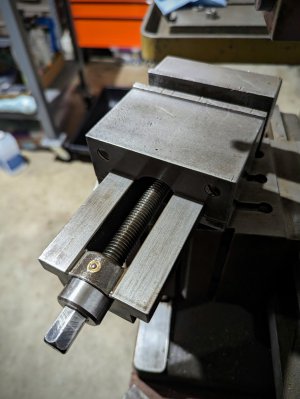
Anyway, that's all for now; I'll pop it back off and get started on other parts of the machine in a few days. I need to get a belt for it, and I need to start thinking on a power switch...and that means that I need to make a final decision on what kind of stand it'll rest on...but for now, I'm going to to just enjoy it being a bit cleaner. And I'm going to find some wrenches; I keep meaning to do that, and life keeps getting in the way. So it goes.
Stay tuned.












